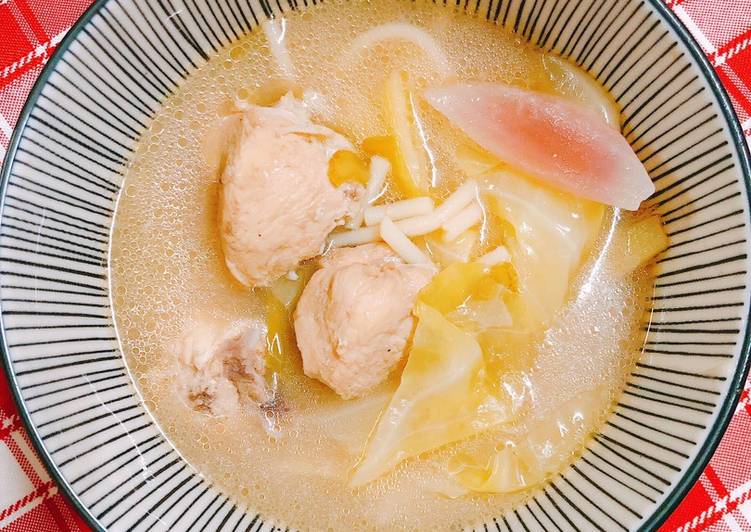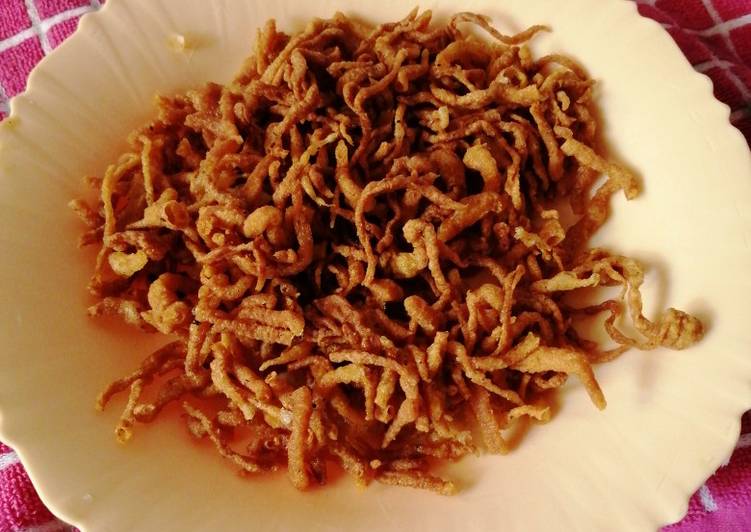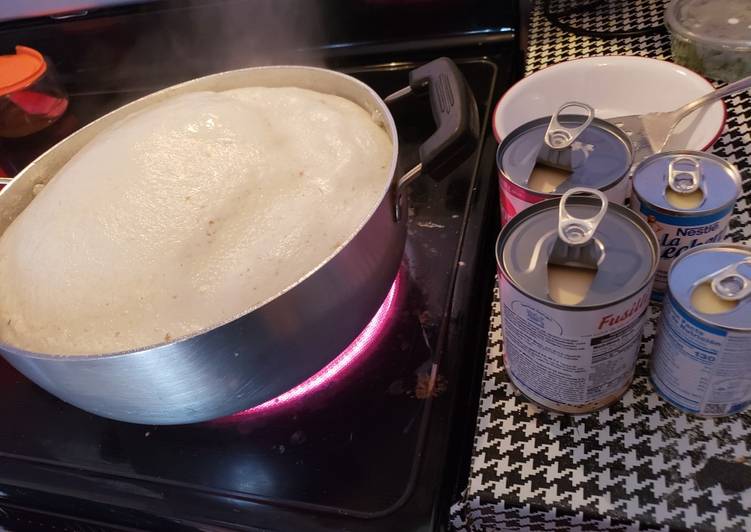
Hello everybody, I hope you are having an incredible day today. Today, we’re going to prepare a distinctive dish, sinampalukang manok with leftover pasta noodles. One of my favorites. For mine, I’m gonna make it a bit unique. This will be really delicious.
Great recipe for Sinampalukang Manok with Leftover Pasta Noodles. This is a sour kind of soup with a twist! ☺️ I hd leftover pasta and decided to mix it in in this recipe. Hope you enjoy! 🌿 Sinampalukang Manok with Leftover Pasta Noodles Hello everybody, it's Jim, welcome to my recipe site.
Sinampalukang Manok with Leftover Pasta Noodles is one of the most well liked of recent trending foods on earth. It is simple, it is quick, it tastes delicious. It’s enjoyed by millions every day. Sinampalukang Manok with Leftover Pasta Noodles is something which I have loved my whole life. They’re fine and they look wonderful.
To get started with this particular recipe, we must prepare a few components. You can have sinampalukang manok with leftover pasta noodles using 14 ingredients and 4 steps. Here is how you cook it.
The ingredients needed to make Sinampalukang Manok with Leftover Pasta Noodles:
- Prepare 1 whole chicken (chopped to the number of pieces you prefer)
- Prepare 5 pieces chopped garlic
- Take 1 medium red onion
- Get 1 thumb of ginger
- Make ready 1/4 of a green cabbage head (separate the hard parts and the soft parts)
- Make ready 3 stalks chopped celery (save the leaves)
- Take 3 long green chilis
- Make ready 1 pack Sinigang sa Gabi Tamarind soup base
- Prepare 100 grams cooked noodles (I used spaghetti for this recipe)
- Take While peppercorns to season
- Make ready to taste Fish sauce
- Prepare Neutral oil to fry in
- Make ready Water for the soup (eyeball this because every pan is different)
- Take Lemon Salt (optional)
Ingredients of Sinampalukang Manok with Leftover Pasta Noodles. Although the vegetable component of true sinampalukan is mostly the tamarind leaves only, feel free to make it more substantial and add eggplant, kangkong or the other types of vegetable common in sinigang. In a pot over medium heat, heat oil. Add onions, garlic, and ginger and saute.
Steps to make Sinampalukang Manok with Leftover Pasta Noodles:
- On medium heat, add oil to your pan. Once oil is hot and ready, add garlic, onion, and ginger and sauté for a few seconds. Add the chicken in and sauté for at least 10 minutes to release it's juices.
- Once the chicken is sautéed, turn the heat on to low and add the water in until all the chicken is submerged in the water. Make your Sinigang sa Gabi Tamarind Soup Base, long green chilis, celery (for the leaves, add it in but make sure that you tie them all together or use a cheesecloth to bundle them together as you’re going to take them out when the dish is fully cooked) and hard cabbage parts in and give it a quick stir.
- Leave the pot on low until the soup comes to a full boil. Once the soup is on full boil, add peppercorns and fish sauce to taste — adjust it to your liking. If you have lemon salt, use it as well to REALLY add that sour kick to your dish. Remember to add the seasoning gradually, tasting as you go. Add the rest of the cabbage here.
- For the final step, add your leftover pasta noodles in, and give it a quick stir. Take out the celery leaves, and serve! Enjoy 😉
Add chicken and cook, until juices run clear. Sinampalukang Manok is a chicken soup dish with a sour broth. It is has similarities to Sinigang, which happens to be one of the most popular Filipino dish. I like Sinampalukang Manok because it is simple and delicious. This dish has minimal ingredients yet it is very flavorful.
So that’s going to wrap it up with this exceptional food sinampalukang manok with leftover pasta noodles recipe. Thanks so much for your time. I’m sure you can make this at home. There’s gonna be interesting food in home recipes coming up. Don’t forget to save this page on your browser, and share it to your family, friends and colleague. Thank you for reading. Go on get cooking!


